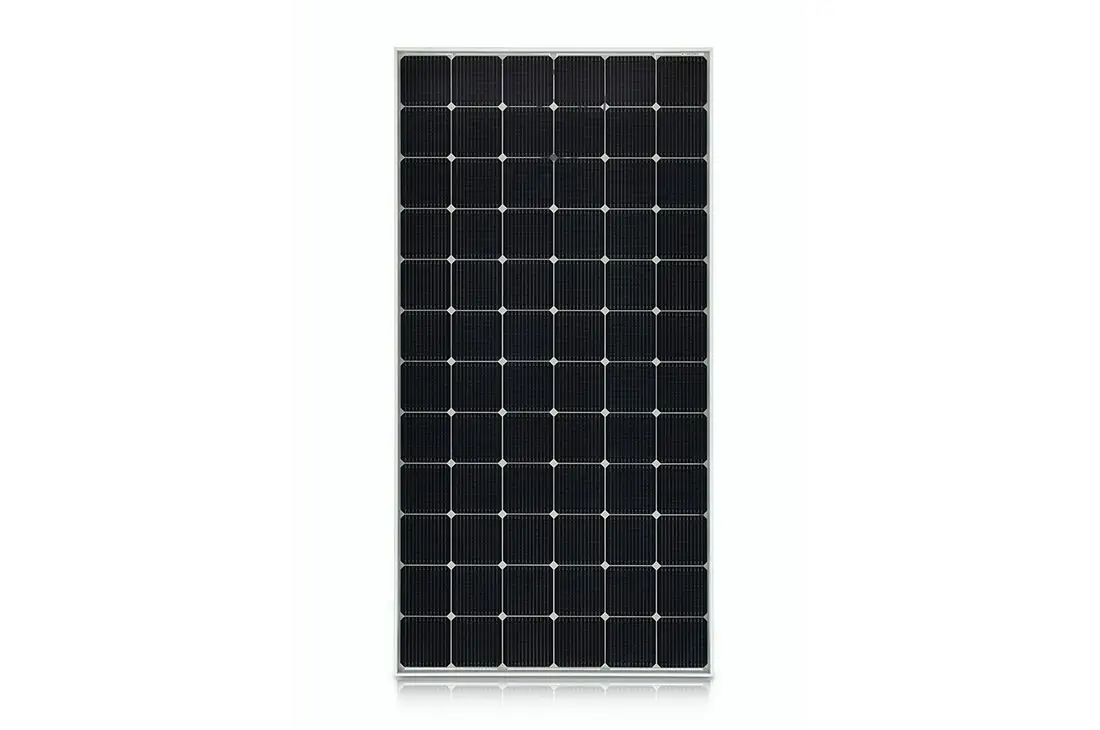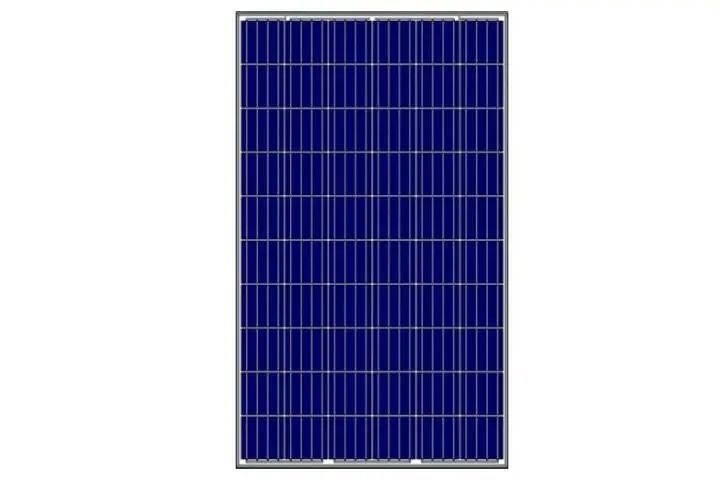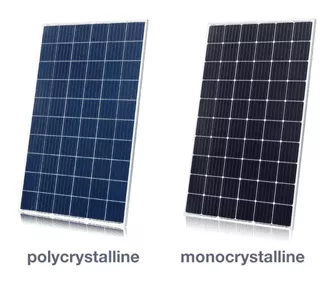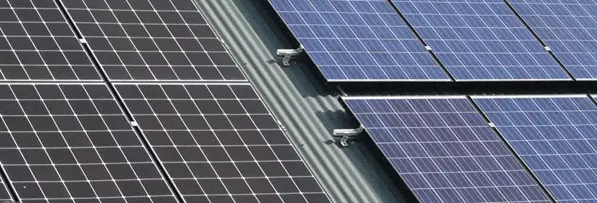When you evaluate solar panels for photovoltaic systems, you will encounter two broad categories of panels: monocrystalline vs polycrystalline solar pv panels. This article details the key differences between these two types of solar panels so that you can determine the best solar panel for your home.
Rodzaje paneli słonecznych
Solar panels currently on the market are mainly divided into three types: single crystal, polycrystal and thin film.
Monocrystalline Solar Panels

Krzem monokrystaliczny panele słoneczne, also known as monocrystalline panels, are the most popular solar panels used in rooftop solar panel installations today. They are made from a single pure silicon crystal cut into multiple wafers and have a uniform appearance and a deep black color. The use of pure silicon makes them known for their high efficiency and small size, making them the most space-efficient and durable of all three solar panel types.
Polycrystalline Solar Panels

Polysilicon silicon solar panels are made from polysilicon, which is derived from different silicon crystals that usually have a blue appearance and have irregular boundaries between the grains. Polysilicon solar panels are cheaper, and their silicon purity and structure are lower than single-crystal panels, but this also makes them less efficient in terms of energy conversion, przestrzeń, and heat resistance.
Thin-film Solar Panels

In addition to monocrystalline vs polycrystalline, there are thin-film solar panels. Thin film panels are characterized by having very fine and thin layers, and they often have advantages in terms of flexibility and lightweight. Each panel does not require frame backing, making them lighter and easier to install. Unlike crystalline silicon panels, which are standardized in sizes of 60, 72 I 96 komórki, thin film panels can be made in different sizes to meet specific needs. Jednakże, they are less efficient than typical silicon solar panels.
What Are Monocrystalline vs Polycrystalline Solar PV Panels

monocrystalline vs polycrystalline solar panels are the two most common types of solar panels. Both use photovoltaic cells made of silicon, the same material used in electronics chips. Like all solar panels, they capture solar energy and convert it into electricity.
There are two kinds of monocrystalline silicon plates:
- Passivated emitter and Aftercontact (PROC) panele: PERC panels are most commonly used for rooftop installations. Their photovoltaic cells have an additional conductive layer on the back to increase energy absorption.
- Double-sided panels: Double-sided panels can absorb light on both faces and have a higher absorption rate than PERC panels. They are usually reserved for ground-mounted systems, leaving both sides of the panel exposed. Double-sided panels are also used for awnings, canopies and highly reflective white commercial roofs.
Polycrystalline silicon panels are manufactured using earlier solar technology, so they are cheaper than newer monocrystalline silicon panels. Jednakże, due to older technology, polycrystalline panels are less efficient than their modern counterparts.
Difference Between Monocrystalline and Polycrystalline Solar PV Panels
Mono vs Poly Solar Panels Efficiency
Solar panel efficiency indicates how well your panels convert solar energy into electricity, expressed as a percentage, the higher the efficiency, the more electricity generated. Na przykład, an efficiency of 20% means that 20% of solar radiation is converted into electricity, while the missing 80% is converted into heat.
Ogólnie, monocrystalline solar panels are more efficient than polycrystalline solar panels because they are cut from monocrystalline silicon, making it easier for the maximum amount of electricity to move around the entire panel. The efficiency of monocrystalline silicon panels is between 15% I 25%, and the efficiency of polycrystalline solar panels is lower, Na 14% Do 17%.
Another advantage of single-crystal solar panels is that the crystal purity of their cells means that their production starts earlier and stops later than polycrystalline solar panels. This type of panel is not only more efficient, but also has a longer power generation period than polycrystalline solar panels.
Mono vs Poly Solar Panel Price
When comparing panels individually, single-crystal solar panels are more expensive than polycrystalline solar panels. Polycrystalline solar panels typically cost between $0.40 I $0.50 na wat, while single-crystal solar panels cost between $0.50 I $0.80 na wat.
But that doesn’t mean that a single crystal solar panel might not be your best choice, and the silicon structure is the main factor determining the cost difference between these two solar panel types. To produce polycrystalline panels, manufacturers must simply pour molten silicon into a square mold and then cut the resulting wafers into individual cells. Odwrotnie, in order to produce single crystal panels, the solidification of silicon must be very carefully controlled, and the process of single crystal panels is more complex, which makes single crystal solar cells more expensive.
Długość życia
The type of silicon cell that makes up a solar panel does not usually affect the life of the panel. When properly maintained, both monocrystalline vs polycrystalline panels can efficiently generate electricity for 25 lat lub więcej.
Both types of solar panels come with two warranties, a physical warranty and an efficiency warranty. Physical warranties are typically 15 Do 30 years and cover any physical damage.
Estetyka

The appearance of a solar cell is also a result of its silicon structure, and the main aesthetic difference between monocrystalline and polycrystalline solar panels is their color: single-crystal panels are usually black, while polycrystalline panels may appear blue. People generally prefer the look of single-crystal solar panels, and black panels can better blend in with more roofs.
Temperature Coefficient
The temperature coefficient indicates the degree to which a solar panel is affected by temperature. All solar panels are factory tested under the same standard test conditions (STC) to ensure fair comparison. The higher the temperature coefficient, the more the power output of the panel drops at temperatures outside that range.
Ogólnie, polycrystalline solar panels tend to have a higher temperature coefficient, which means they are less productive at high temperatures. The temperature coefficient of monocrystalline silicon plate is low and the heat resistance is good.
Which Is Better Mono or Poly Solar Panels
Each type of solar panel has advantages and disadvantages, and both can earn a good return on investment. Your decision depends on your personal preferences, space constraints and financing options.
Do you want a specific color of solar panels?
If you think the color of solar panels is important, remember that the color of monocrystalline vs polycrystalline silicon panels are not the same. The single crystal panel is black, while the polycrystalline panel is blue. You can buy solar panels that suit your taste.
How much space do you have for solar panels?
If the size of your PV system is limited by the space available on your roof, more efficient monocrystalline silicon panels are a good choice. The same is true for applications that require less space and energy, such as powering RVS and small devices. Paying extra for more efficient monocrystalline silicon panels can help you maximize your power generation in the long run. If you have a lot of roof space or are installing ground-mounted solar, less efficient polycrystalline panels may be a more economical option.
What are your budget and financing options like?
How your system is financed will also affect which type of panel you choose. Polycrystalline solar panels are cheaper, but single-crystal solar panels are more productive. If you have access to a solar loan option with a favorable interest rate, you can finance the solar installation and use the utility savings to repay the loan. W tym przypadku, paying more for efficient single-crystal solar panels can bring a higher return on your solar investment.
Wniosek
W skrócie, whether you choose monocrystalline or polycrystalline silicon panels, it all depends on your roof space, budget and personal preference. A single panel is more efficient, requires less space, but costs more. Polysilicon solar panels are less efficient and require more roof space, but they are cheaper.
Most solar companies offer both monocrystalline vs polycrystalline solar pv panels. Start your Solar journey with GYCX Solar today. You can try filling out the form below to get a quote and we’ll connect you with local solar companies that will compete for your business with a solar quote tailored to your needs. Więcej niż 10 million people visit EnergySage each year to learn about, buy and invest in solar energy.
Często zadawane pytania
Is solar cell technology still improving?
Obecnie, many scientists are studying how to improve the efficiency of solar cells. Na przykład, the Department of Energy’s National Renewable Energy Laboratory (Nrel) is a leader in high-efficiency solar cell research.
Can monocrystalline vs polycrystalline silicon solar cells be mixed?
Technically, Tak. You can mix monocrystalline vs polycrystalline solar cell, but it is not recommended because other cells provide different electrical characteristics for each panel. If you are interested in mixing them due to a specific situation, it is best to contact an electrician or professional installer. Factors such as voltage, Wattage, and current need to be carefully considered for each panel type.
What are the advantages of monocrystalline cells and panels?
Single-crystal cells and panels typically have the highest efficiency, zwykle w zakresie 15 Do 20 percent or even higher. Ponadto, they have a higher power output per square foot than polysilicon options, which saves space. They also tend to be more effective in warm weather, which is ideal if you live in a mild to warm climate. Wreszcie, due to the better heat resistance of monocrystalline silicon panels, they are expected to have a longer service life and usually have a 25-year warranty. For more information on the life expectancy of various panel types, please read our article on the useful life of solar panels.
Which type of solar panels works better in hot climates?
Monocrystalline silicon panels have a low temperature coefficient, which means they can withstand high temperatures. Single panel works well in hot, dry environments. Jednakże, they are affected by lower temperatures.
What is the difference between monocrystalline and polycrystalline solar pv panels?
The difference between monocrystalline and polycrystalline solar panels is reflected in many places, such as the mono vs poly solar panel price, efektywność, appearance, itp. Polycrystalline solar panels use blue cells made from multiple silicon crystals and are less efficient but cheaper. Monocrystalline panels have black cells made of monocrystalline, and they offer higher efficiency at a higher price.
